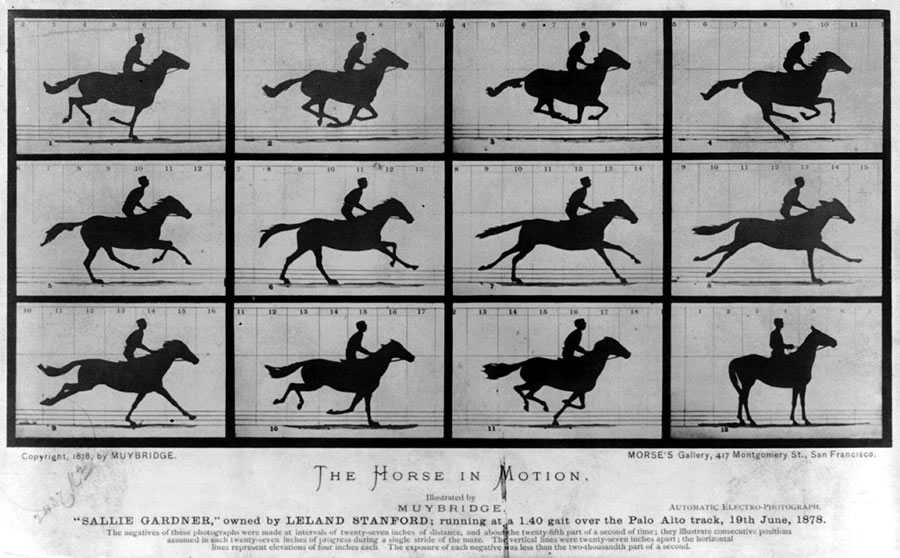Beginnings of Motion Analysis
Motion analysis is generally considered to have originated in the 1870’s. Eadweard Muybridge was hired by former California governor and university founder Leland Stanford. He was hired to settle the debate of whether racehorses had an unsupported “flight phase” or they always kept at least one hoof on the ground. It is a question that would be easily answered with today’s video technology, but Muybridge was hired a full decade before the movie camera came into existence.
Muybridge set up a series of fixed cameras along the side of the racetrack, each with a trigger wire so the camera would take a picture as the horse went by. The photos definitively showed that the horse had a ‘flight phase.’ Even more interestingly, those who did believe there would be a flight phase thought it would occur when all four legs were outstretched. Even though they won the bet, they were proven wrong! In reality, the horse has all four legs in the air as they are being gathered underneath. This technology, though crude by today’s standards, educated fans, trainers, riders, and artists as to what actually happens during a sport, as well as dispelled a commonly held belief.
"The Horse in Motion" by Eadweard Muybridge - Library of Congress Prints and Photographs Division; http://hdl.loc.gov/loc.pnp/cph.3a45870. Licensed under Public Domain via Wikimedia Commons.
Motion analysis has come a long way. In the first half of the 20th century, researchers were able to synchronize multiple high-speed cameras and, by identifying landmarks and markers on each film by hand, were able to create a three-dimensional model of the human body. Being able to analyze and measure the movement of a person in 3-dimensions was a huge step forward in understanding how we actually move, but it was a very time-consuming process. Hand ‘digitizing’ a few seconds of film could take a day or more, depending on how many cameras were being used.
By the 1980’s, specialized cameras were developed to record the motion of reflective markers. The positions of these markers told researchers where the different parts of the body were, but much faster. Results are now available in minutes or even seconds.
